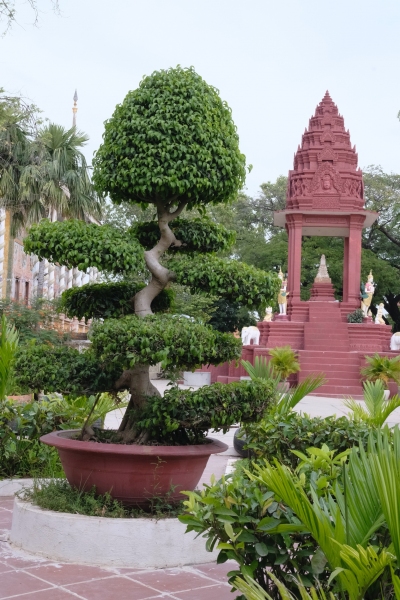- Forum
- Photography and Camera Forum
- Taking the Photo | Editing | The art of Photography!
- Tips and Taking Photos
- Balancing Sky and subject exposure
Balancing Sky and subject exposure
-
 Topic Author
Topic Author
- Khelm
- Newbie
- Followers: 8
-
Points:
8575
Post #700155
-

- Nikon Shooter
- Oh Wise One
-
- 3S 3X 810 850
- Followers: 197
- Posts: 13795
-
Points:
88932
Post #700714
This shot needs a horizon tweak and is overexposed some.
Try dialling in an EV of say -0.7 to start with. In any case,
your histogram is your best friend prior to SR.
Light is free… capturing it is not!
-
 Topic Author
Topic Author
- Khelm
- Newbie
- Followers: 8
-
Points:
8575
Post #700731
I didn't concern myself with the horizon since I was trying to focus on the sky/subject. Also, I didn't edit in Post since I am not using this image for any reason other to ask this question. Even so, I should be more aware when taking the photo.
I recently got a Fuji XT3 and have a histogram on screen. I am still a bit overwhelmed by the different functions, options, etc, etc. Part of slowing down when taking photos I guess.
Thanks again
-

- Ozzie_Traveller
- Apprentice
-
- Currently using a Panny FZ-300 and FZ-2500 with occasional use of a Panny mirrorless G-series
- Followers: 124
- Posts: 2713
-
Points:
54276
Post #702004
Back in film days, the instructions in the box often had a small sketch of the camera pointing downwards -maybe 20degrees- to avoid a false reading from a super-bright sky. It is a pattern for exposure that I more-or-less follow today as well
My Panny system is preset for 2 things ... i) a smallish focus point size (it is about the size of the opening square in the rear sculpture), and ii) metering (centre-weighted, occupying a circle about 1/2- the width of your pic above
If I were shooting the above scene, it would be metered from the wiggley tree trunk & its green leaves, and either a half-press of the shutter button -or- a press of the AEL lock button, before moving the camera up-down-left-right for compositional purposes
Then in pp if needed, I would select the sky and darken it a bit (again if needed)
Hope this helps
Phil from the great land Downunder
www.flickr.com/photos/ozzie_traveller/sets/
-
 Topic Author
Topic Author
- Khelm
- Newbie
- Followers: 8
-
Points:
8575
-

- Nikon Shooter
- Oh Wise One
-
- 3S 3X 810 850
- Followers: 197
- Posts: 13795
-
Points:
88932
Post #702150
way to do it is using your best friend: the histogram.
Light is free… capturing it is not!
-

- Ozzie_Traveller
- Apprentice
-
- Currently using a Panny FZ-300 and FZ-2500 with occasional use of a Panny mirrorless G-series
- Followers: 124
- Posts: 2713
-
Points:
54276
Post #702153
to follow my post above - yes
to follow NS's post above -yes also
a) go to your camera menu setup options and switch 'on' the Histogram option. This will show you a generalised sort of image inside your photo that indicates its overall exposure state. If you have an EVF you will see it -before- you take the photo, if you use a traditional SLR with OVF it will show on the LCD screen -after- you take the photo
b) from film days, the old saying was (and NS implies it is still the same today) "expose for the bright-bits and leave the shadows to look after themselves". While this will not always work (ie- no rule is universal) it does respect the scene overall (look at NS's image of the wine-coloured leaves from several days ago)
c) there will be some scenes where you -want- the skies to dominate - so you expose for them. Also there will be other scenes where you have something else that is the most important - so you expose for that item
Composition is another matter - and here you align the camera / lens to concentrate the viewer's attention onto the main subject - as per usual
Hope this helps
Phil from the great land Downunder
www.flickr.com/photos/ozzie_traveller/sets/
-

- Nikon Shooter
- Oh Wise One
-
- 3S 3X 810 850
- Followers: 197
- Posts: 13795
-
Points:
88932
Post #702160
- they are so well constructed that I am ashamed to have to use a translator
- waaaay longer than mine, it is obvious that he is a far better typer than I am
Light is free… capturing it is not!
-
 Topic Author
Topic Author
- Khelm
- Newbie
- Followers: 8
-
Points:
8575
-

- Ozzie_Traveller
- Apprentice
-
- Currently using a Panny FZ-300 and FZ-2500 with occasional use of a Panny mirrorless G-series
- Followers: 124
- Posts: 2713
-
Points:
54276
Post #702273
Nikon Shooter wrote: Phil's replies drive me crazy.
… one day, though, one day…
- they are so well constructed that I am ashamed to have to use a translator
- waaaay longer than mine, it is obvious that he is a far better typer than I am
Ah mate .... but you're far better looking
Phil
- Forum
- Photography and Camera Forum
- Taking the Photo | Editing | The art of Photography!
- Tips and Taking Photos
- Balancing Sky and subject exposure
Latest Reviews
The Olympus Pen E-P7 is an affordable micro four thirds mirrorless camera with 4K video capabilities, a 20.3MP sensor, and 121 focus points, making it a solid entry-level camera for beginners.
The Panasonic G9 II is a 25.2-megapixel micro four thirds camera with numerous features that make it punch out of its weight class, like 779 AF points, 5.8K video, and weather sealing.
The Fujifilm XT5 is a 40MP mirrorless camera capable of 6.2K video at 30p. With those specs, it’s an ideal choice for photographers needing a camera to pull double duty for imaging and video.
The Canon EOS R100 is an entry-level mirrorless camera introduced in 2023. But just because it’s an entry-level camera doesn’t mean it’s a bare-bones camera. Find out why in this review!
Latest Articles
Auto white balance is a camera setting that adjusts the color temperature of your images automatically. It often works well, but you should know a few tips to fix problems it might cause, too.
The Canon EOS 5D Mark III might be more than a decade old, but it still has the chops to be a quality camera for photographers in 2024.
Starting a photography business can be a daunting task. There is a lot to do, and many mistakes can be made. This guide helps you minimize mistakes and maximize your success!
The Canon 6D Mark II might be an older DSLR, but that doesn’t mean it isn’t a good option for 2024. In fact, this budget-friendly camera is a powerhouse for stills and videos.
In this guide to the bokeh effect, you’ll learn what bokeh is and the factors involved in creating it. You’ll also explore some beautiful example images to spark your creativity with bokeh!
Upgrade your kit in 2024 with the best intermediate camera on the market! The question is, what camera fits the bill? We’ve got three top options for you to choose from in this buyer’s guide.
The best photography jobs right now are a mix of tried-and-true gigs like wedding photography and new jobs highlighting AI’s capabilities, travel, and videography.
The Olympus Pen E-P7 is an affordable micro four thirds mirrorless camera with 4K video capabilities, a 20.3MP sensor, and 121 focus points, making it a solid entry-level camera for beginners.
















